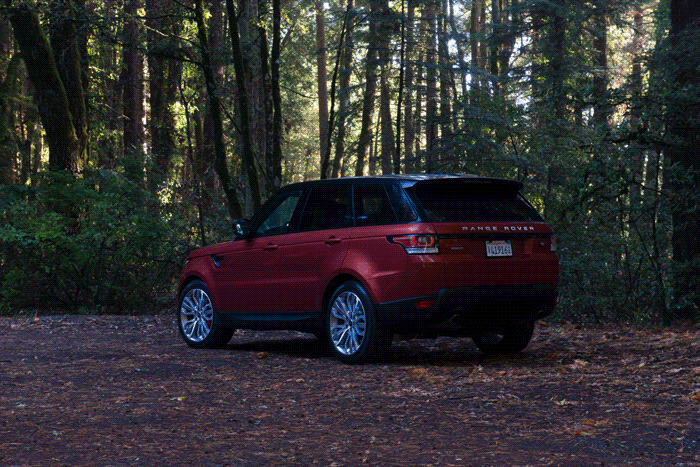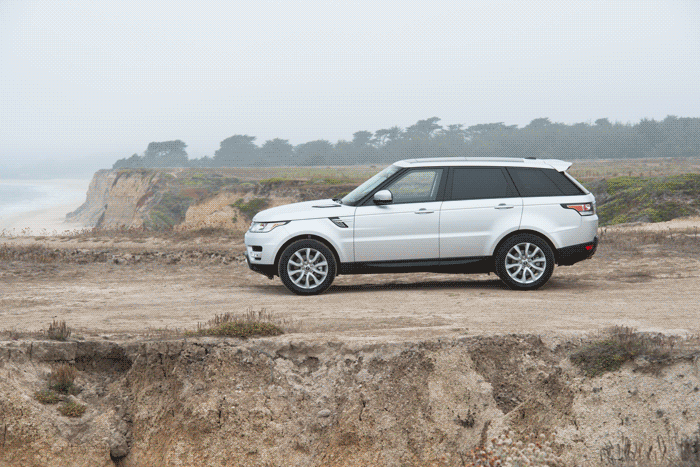Many new photographers hold a lot of excitement and fear inside of them waiting to be unleashed the moment they receive a call to do their first big photoshoot or ad campaign. For talented automotive photographer John Zhang, this was no different when he received a call from one of Land Rover USA's ad agencies recently. He has been nice enough to share his entire experience from the first client call to executing the shoot itself. There is a lot to learn from Zhang and his photoshoot, read on below!
As told to Fstoppers by commercial photographer John Zhang:
The Importance of Networking and Self-Marketing
Before I even thought about shooting professionally, I was doing it for fun. With my area of expertise being automotive photography, I began photographing my first car for fun and shared it religiously on different automotive forums. At the time, little did I know, it’s because of that that I would be branding myself and creating recognition for my business in the years to come.
When I first started, I had limited knowledge of how to use a camera, or even Photoshop or Lightroom for that matter. It was through trial and error along with accepting countless peer critiques that I was able to develop my own style and improve my photography skill in a short amount of time. As I mentioned, I first started photography merely for fun and had no idea where it would lead me. As I submitted more and more content online over time, I began to catch the attention of automotive aftermarket vendors and companies. That’s what eventually lead my work to being discovered by ASG Renaissance.
ASG Renaissance is one of the handful of agencies who represent Land Rover USA. When the creative director of the agency first reached out to me, he told me that he was referred to my work through a colleague who was also an automotive enthusiast like myself. They had seen and remembered my work that I had posted on the forums a few years ago. It was thanks to my relentless nature of wanting to share both my passions that I was introduced to my first “big” shoot with Land Rover USA.
Making Contact and the Waiting Game
After initial contact was made by the agency, the ball was in my court. I could either mess up really badly by replying very unprofessionally, or sounding overly confident. In my experience, when an agency contacts you with the possibility of working on a national campaign, it’s very hard to stay calm. I had to slap myself a few times to make sure I wasn’t dreaming, as cliché as that sounds, but it happens to most of us.
At this stage, it’s very similar to replying to a text from someone you would like to go on a date with. You do not want to sound too eager or too confident. The typical email you would get from an agency usually is an introduction to the agency and the client, which in this case was Land Rover USA. In return, the agency asked me to introduce myself and my work experience. It’s also very similar to a job interview. In my response I replied with my online portfolio and a short bio. If the agency deems that you are fit for the job and the client, you’ll be moved on to the next stage. In the meantime, you’ll be playing a waiting game with the agency. I find that agencies are often busy and take longer to reply the larger they are, it’s okay to send follow up emails to remind them about yourself and your interest in working with them. Just remember to be patient.
It’s important to note that you may not make the cut and it’s completely out of your hands, so be prepared to get turned down. There might be another agency or photographer the client is interested in. Don’t bank everything on a single job when you should be actively looking for more opportunities.
Organizing and Planning the Shoot
After a few weeks and several emails back and forth, I was informed that the client finally approved and that I got the job. I remember this moment clear as day. I was standing in line at a local pharmacy and literally struck an awkward pose due to the great news I had received. Once again, I had to make sure I wasn’t dreaming. This is a normal occurrence for those who land a chance to get into the big leagues so it’s alright to celebrate and stop worrying whether you’ll get the job or not.
The next step was to organize and plan the actual shoot and send in an estimate or a bid for the client to approve. The shoot itself was set to be done over three days in Northern California along the coast. With that in mind, I had to remember to budget in travel fees, which meant plane tickets, extra baggage fees, vehicle rental, and hotel booking fees. After looking into travel fees, I had to decide whether or not assistants were within the budget. I decided that it would be best to take two assistants with me; one was very knowledgeable with external lighting while the other had been on larger scale shoots and knew a little of everything when it came to jobs like this. Their daily rates were then added to the estimate. Next up, I did an equipment check and made sure I had all the necessary photography gear. I added an equipment fee along with rental fee for all the gear that I would need to expense or rent. I also played it safe and had my assistants bring their photography gear too just in case something would happen to my own. It’s always good to have backups. Finally, the last few fees were the hardest to calculate. The photography, licensing, and retouching fees are very dependent on the client’s budget and usage of your image. There isn’t really a set dollar amount for this. However, throughout my years of shooting, I have befriended many in the same industry and they were able to provide me with the best advice. In the end, I was able to deduce a fee that I thought was fair and sent off the final estimate to the agency and client.
At this point, it’s not over yet, you only sent in an estimate. The client and agency can come back to you and tell you either the bid is too high or too low. If and when they do come back to you, don’t worry, just be prepared to adjust it. In my case, I was told my initial bid was a tad too high, so I adjusted. After the revised bid was sent in, I got the job and all parties involved were happy.
I arranged for my assistants and I to arrive a day early in order to scout the general location. I was to be given two different cars to shoot at two different locations. One was to be shot in the forest while the other along the coast. I wasn’t familiar with the area and had never been there, so we physically had to go on location to check it out.
As we explored, we found several suitable locations and used our rental SUV as a stand in to see just how the location would look with the car. These are some of the locations we were happy with (many thanks to my assistant Steve Demmitt for the shots).

One of the locations we ultimately decided on.

Eventually we decided that this location was a little too plain.
After relaying the locations to the creative director of the agency, we settled on two locations that the client would like. It’s very important to keep an open line of communication with the person in charge on the other side. Keeping him or her in the loop helps a lot, especially if it’s your first time working together.
The Shoot
On both days, our wake up call was at 4 a.m. Since the drive to the locations we decided on were at least an hour away from the hotel, we had no choice but to wake up early and beat the sunrise. When we got to the shoot locations, it was still dark and very cold. However, that gave us plenty of time to prep our camera equipment and clean the car and location for the shoot.
Here are some behind-the-scenes photos of the shoot:

Arrival at 5 a.m. on the first day at the first location.

We had enough time to prep the location, car, and my photography gear.


By the time everything was prepped, the sun was peeking through the trees and it was time to get to work.

Trying to get that perfect shot.


The next day was another early morning. I felt like daredevil standing right on the edge of the cliff. Coincidentally my other assistant’s name is Cliff.

The second day ended much quicker than we anticipated since we already went through the process a day earlier, so we took the chance to take a memorable portrait at the location.
Post Work
Here’s are a couple behind-the-scenes GIFs of the post-processing work that I had three days to complete. It’s common for the client to request a quick turnaround time. You can either sacrifice your own time for them or hire a third party to help you. In this case, I wanted to challenge myself with the tight deadline and do everything myself at this stage. Although, I must admit that I had people on call ready to help me. Here are two GIFs of two of the final shots.


End Results
In the end, I had a total of 63 photos, which is a lot considering I only had enough time and budget to edit them on my own in merely 3 days. However, both the client and agency were extremely happy and that’s what makes it all worth it to me. Here are a few of the photos that the client has already released from the batch of photos that I submitted to them.



John Zhang is a commercial automotive photographer based in Los Angeles. He has been an automotive photographer for well over six years and has worked with clients such as Land Rover, Mazda, Toyota, and much more. Through automotive photography, he combines both his passion for cars and photography. You can view his work at 1013MM.com.







Great post! Thanks for sharing, I really appreciate this.
Congrats!! The final images look great. Thanks for sharing your experience.
Congrats! I think for many of us it's the big dream being able to see our work used for a large campaign. I'm sure the nerves kicked in during the shoot. I remember my first wedding being terrified knowing I have to deliver what I said I could.
Thanks for putting in those Post Process animations! I always love seeing those.
That red is baked and looks like it was done in keyshot.
Great writeup! thanks for sharing your experience
Great work as always John, I remember always looking up to your work on my e46fanatics days.... and I still do.
awesome article! Was this on the Lost Coast? I live very near there and was about to take a trip out to the coast where I've heard automotive shoots were done so it's funny to see this now. Nice work! If youre ever in norcal and need an assistant again, I'd love to help! ...or just watch :)
very inspiring!..as soon as I read this post, I grabbed my camera and took my car out!
Great article John, many thanks for the experience.